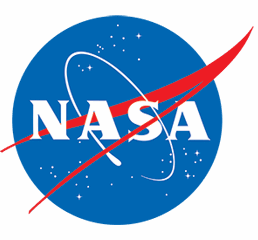Building Tomorrow's STEM Professionals: How STELLA Bridges Workforce Skills and Education
Video Summary
“When we talk about engaging the scientific community,” Resnick concludes, “the biggest indicator of success is giving students real opportunities to engage with scientific results and NASA missions they wouldn’t be able to touch without using the STELLA.”
The Educator Behind the Innovation
When Elana Resnick collaborated with the STELLA project, she brought a unique combination of expertise as both a classroom teacher and university lecturer specializing in physics, engineering, and robotics education. Her experience running professional development for high school physics teachers and serving on the American Association of Physics Teachers’ Committee for Science Education made her ideally suited to help transform scientific instruments into powerful educational tools.
A Foundation in Scientific Method
“Everything starts with an observation,” Resnick explains, highlighting the philosophy that drew her to the STELLA project. This alignment with the Investigative Science Learning Environment (ISLE) method she learned at Rutgers University under Eugenia Atkins shapes her approach to science education. The STELLA instruments, with their focus on observational data collection, provide students the perfect platform to observe phenomena, develop patterns, formulate hypotheses, and conduct experiments.
Transforming Technology for Education
The evolution from standard spectrometer to the Helio-STELLA represented a collaborative effort to connect students with heliophysics concepts. Resnick was particularly excited about incorporating UV detection capabilities. While many teachers use UV beads to demonstrate ultraviolet light, she recognized the value of providing quantifiable data. “It’s something different when it’s actually a detector and they can put a number to it instead of it just changing colors,” she explains. “It drives the meaning home a lot more.”
Accessibility and Workforce Development
Perhaps most important to Resnick is STELLA’s affordability and accessibility. “Just because this thing is cheap doesn’t mean it’s not powerful,” she emphasizes. This democratization of technology enables more students—regardless of school funding—to gain hands-on experience with scientific instruments similar to those used in professional settings, developing technical skills directly applicable to future careers.
Real-World Applications
The project gained further validation when researchers began using Helio-STELLA to collect data during geomagnetic storms. This real-world application demonstrated how classroom tools could connect directly to current scientific research, providing students with authentic experiences that mirror professional scientific work—a crucial aspect of workforce preparation.
Encouraging Student-Driven Inquiry
For Resnick, STELLA’s greatest potential lies in its ability to engage students in asking their own questions. Rather than prescribing specific activities, she advocates “throwing that back to the teachers” and encouraging students to formulate their own inquiries. This approach builds critical thinking and problem-solving skills essential for future STEM professionals facing unknown challenges.
Building Tomorrow’s STEM Workforce
Through Elana Resnick’s contributions, STELLA has evolved into more than just a classroom spectrometer—it’s become a bridge connecting students to the excitement of scientific discovery while developing workforce-ready skills. By making complex scientific concepts tangible and providing hands-on experience with instrumentation, STELLA helps prepare students for careers in fields ranging from environmental science to space technology.
“When we talk about engaging the scientific community,” Resnick concludes, “the biggest indicator of success is giving students real opportunities to engage with scientific results and NASA missions they wouldn’t be able to touch without using the STELLA.”
Transcript
Mike Taylor: Can you tell me a bit about yourself? You, I know you’ve described yourself as super evidence based and spot on every state of the art, state of the art educational thing that’s going on.
Mike Taylor: Can you share what your current educational research most influences your approach to developing tools like the Helio-STELLA or just tools in general?
Elana Resnick: Yeah. So, I come from a background in the investigative science learning environment, the ISLE method. I was taught by one of the founders, Eugenia Atkins at Rutgers University. That’s where I got my master’s in physics education.
Elana Resnick: And that’s where I learned everything about what I know about how to teach physics. And through my professional network of educators, I’m constantly getting blown away by amazing and incredible work and really cool stuff that they continue to push the envelope in physics education research. So that’s why I get to still learn about it. And because of that part of the ISLE method and I’ll refer to it as ISLE moving forward instead of investigative science learning environment.
[Content continues]
Mike Taylor: But I think that it’s something different when it’s actually a detector, and they can put a number to it instead of it just changing colors. It it drives the meaning home a lot more. And I think that that is a nice connection that students can make. And so that’s one of my favorite parts about building it, putting it together.
Elana Resnick: And honestly, I am impressed by the whole team that I got to work with, that we could come together and create something and have it exist within. I don’t know how short of a time was that? Was that well, you’re talking about Paul Miro and Pat Haas. Yeah, literally both of them being having such a great engineering background, just building it out, you know.
Elana Resnick: Yeah. So like, as we’re talking about ideas and they’d be like, yeah, we have a thing that you can do that. Yeah. We have a and I don’t think that that thing is too expensive. Yeah. Let’s throw that one on there. And just like the whole collaborative process was also it was also really neat. And I didn’t expect for it to happen like that.
Elana Resnick: And I don’t know what I expected, but it was really exciting.
Mike Taylor: If you had the chance, what things would you like to see it used for?
Mike Taylor: What do you think it would be useful for? And all of that?
Elana Resnick: To be honest, I have. I want to throw that one back to the teachers. I want them to come up with cool ideas. I want students to come up with cool ideas. I want them to ask the good questions, because it’s been three years since I’ve even necessarily looked at the teaching standards these days, and, you know, I want I like always challenging people to ask good questions.
Elana Resnick: And I think that they would ask some questions that I haven’t even thought of.
Mike Taylor: There’s someone, committed to evidence based education. How do you measure the effectiveness of Helios still in achieving learning objectives?
Elana Resnick: That’s a good question. I would say that definitely having, like, gaining pre knowledge and post knowledge is huge for what we would need to do in order to actually measure that. And also seeing how often students bring it up themselves afterwards.
Elana Resnick: So after you leave the classroom, right. And then the students come back to their teachers, are they still talking about the things that they did with the salad yesterday? Are they talking about it a month from now? Are you going to hear them? You know, asking to pull it out when they hear about something interesting going on in Science News today?
Elana Resnick: You know, so I think that that would be the biggest indicator that, you know, that you’re achieving some real success with the students and giving them real opportunities to engage with the scientific community, scientific results and really cool NASA missions that they wouldn’t be able to touch without using the STELLA.




